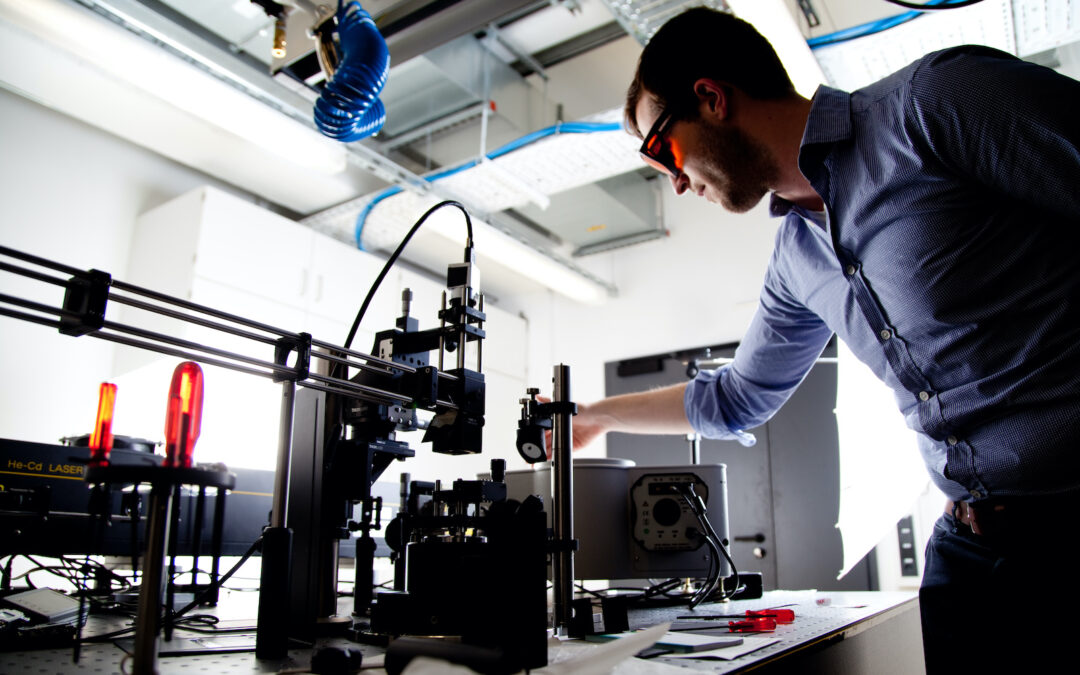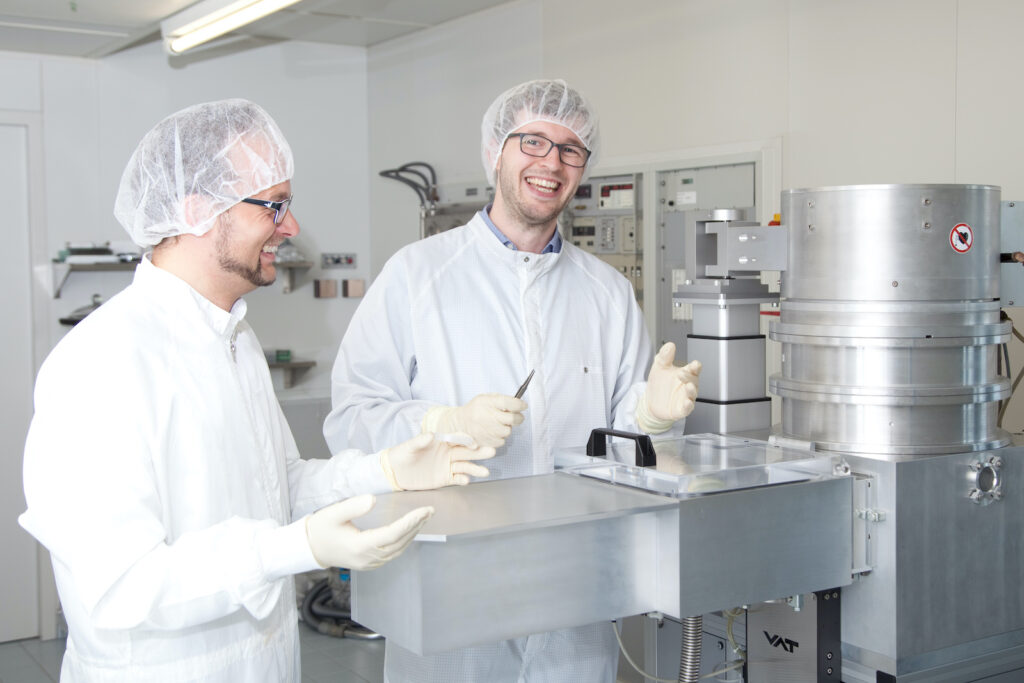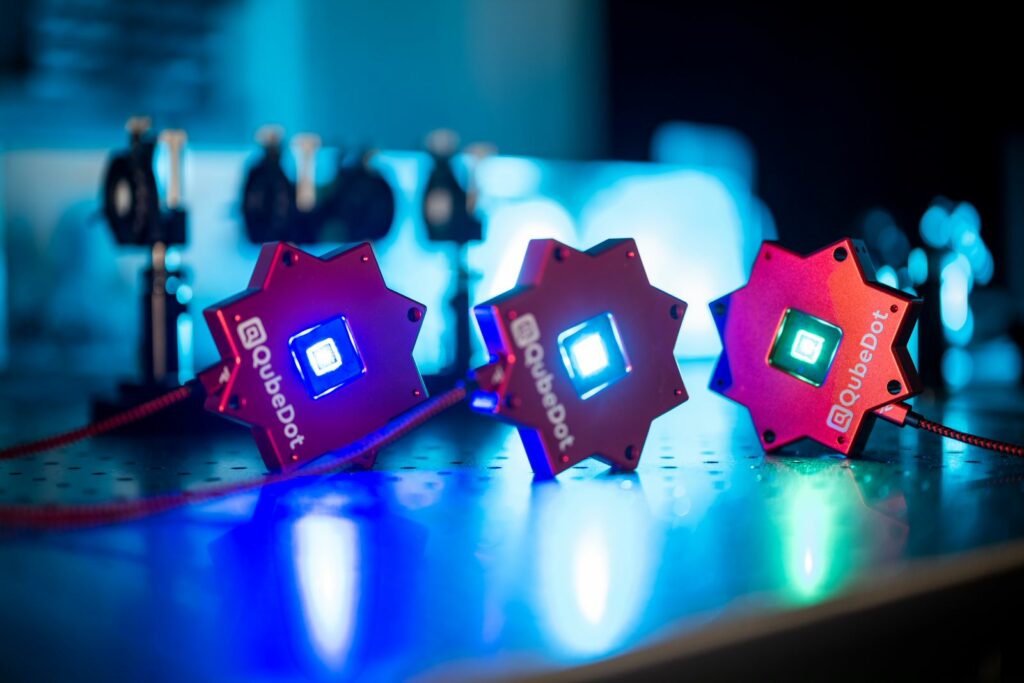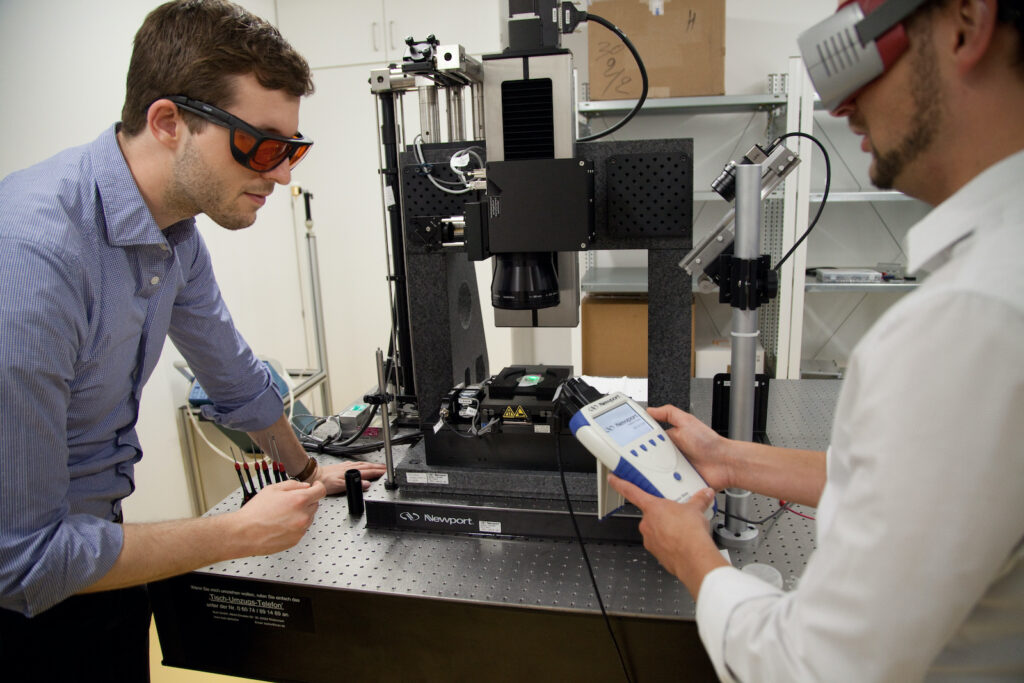Our ‘Spotlight’ series provides an opportunity to get to know the QVLS community of local and global players from the worlds of science and industry. In our interviews, we discuss their motivations, accomplishments, and visions for the future of quantum technology.
Heiko Brüning, who is from a town outside of Bremen, co-founded QubeDot in 2019 with his long-time friend Jan Gülink. After completing a masters in mechanical engineering and then a PhD in laser material processing, Brüning was itching to switch gears to gain some experience in the “real world”. While working in the industry, he became interested in creating businesses. So he did an MBA to dive into the world of business.
After that, by chance, he met Professor Andreas Waag, Head of the Institute of Semiconductor and Technology (IHT) at the University of Technology Braunschweig and a spokesperson for the QuantumFrontiers Cluster of Excellence research program. Waag, Brüning, and Gülink discussed the potential of launching a startup in the field of quantum technology and that’s how the idea for QubeDot was born. Since its founding as a spin-off of IHT in Braunschweig, QubeDot has grown to a team of 10 people and now counts customers from across the globe.
We spoke to Brüning about the journey of building up QubeDot, the excitement of combining technological research with business knowledge, and what it’s like to be part of the QVLS ecosystem.
“It’s incredibly thrilling to turn technology that was developed at a research institute into a real-life product.”
Can you start by introducing us to what QubeDot does?
QubeDot is a company that has deep tech knowledge in building microLEDs, which are light sources that are approximately the width of a strand of hair. Our technology can create and customize these tiny light sources for various applications in industries such as biology, optogenetics, microscopy, or metrology. While there are other big players in the field producing bigger LEDs that are up to several millimeters in size at large-scale quantities, meaning batch sizes of some million LEDs at a time. We believe there are so many exciting applications that require smaller sizes and batches, so we’re filling in the niche to provide customizable microLEDs.
For instance, a customer might ask for a circular-shaped microLED for one of the key technology components for their products and we would create a tailored solution to produce that for them. Another example is that we developed a microscope product using our miroLEDs that is accessible to anyone because it’s small and all you need to do is connect it to your laptop or mobile app to use it. In addition, our technology can facilitate quantum computers coming into existence.
What inspired you to start QubeDot? How did you move from an interest in quantum technologies to launching a company?
I wanted to use my knowledge of technology and business to create value for customers. It’s very different to conduct research in a lab for the next journal publication, as compared to applying your knowledge to create a real-life product that people need. It’s incredibly thrilling to turn technology that was developed at a research institute into a real-life product.
For those who aren’t familiar with GaN-based microLED technology, can you briefly explain what it is and why it’s important?
What makes us different from other companies in this space is that we use GaN technology, or Gallium nitride technology that enables higher precision when producing microLEDs and leads to higher efficiency. We fabricate multiple microLEDs on one chip with a lateral positioning tolerance of some nanometers, which other processes don’t allow for.
“Imagine, if quantum computers can provide enough computation power to simulate climate change accurately? There are so many potential applications that can benefit people, if used appropriately.”
What do you hope to achieve with QubeDot? What kind of problem or challenge does this quantum technology address?
With QubeDot, we have two goals. First, we want to show that there is a market for customized microLEDs and light sources that bigger players haven’t tapped into yet. Second, since we’re a spin-off from IHT at the University of Technology in Braunschweig, we want to demonstrate that technology developed at a research institute can be a great foundation for launching a company.
What are some of the biggest obstacles that you’ve come across while building up the company so far? How did you overcome them?
When I met Professor Waag, we realized that while we definitely knew how to build microLEDs, finding a product-market fit for the technology was more difficult, especially since there are so many semiconductor technologies being explored at IHT. This process of deciding to focus on one technology to develop a product took some months and required intensive market interaction but we got there in the end.
What is your long-term vision for QubeDot? What are your plans for the coming year?
Our vision is to build QubeDot into the go-to brand for customized microLEDs worldwide. Since we already have customers around the world, we believe we’re on our way to achieving this but, of course, it will take some time to really penetrate the market.
How do you like working in Lower Saxony?
There are plenty of options to receive support, especially from the QVLS ecosystem or QuantumFrontiers research program. Not only that, the standard of living is high and there are many quiet places to relax from business stress.
As a QVLS partner and startup founder, what is it like to be part of the QVLS community?
It’s truly wonderful to be part of an ecosystem that exists as a link between research institutes that focus on technological innovations and companies, or potential customers, looking to turn quantum technology into a product. The QVLS network consists of so many supporters and professors with great visions and that’s really helpful.
What advice would you give to someone interested in launching their first startup in the area of quantum tech?
Firstly, talk to potential customers. Do they understand what you want to sell them? If yes, take a closer look at the equipment you need to produce your product. Who can provide this? Once you figure that out, it’s important to build a relationship with these people.



